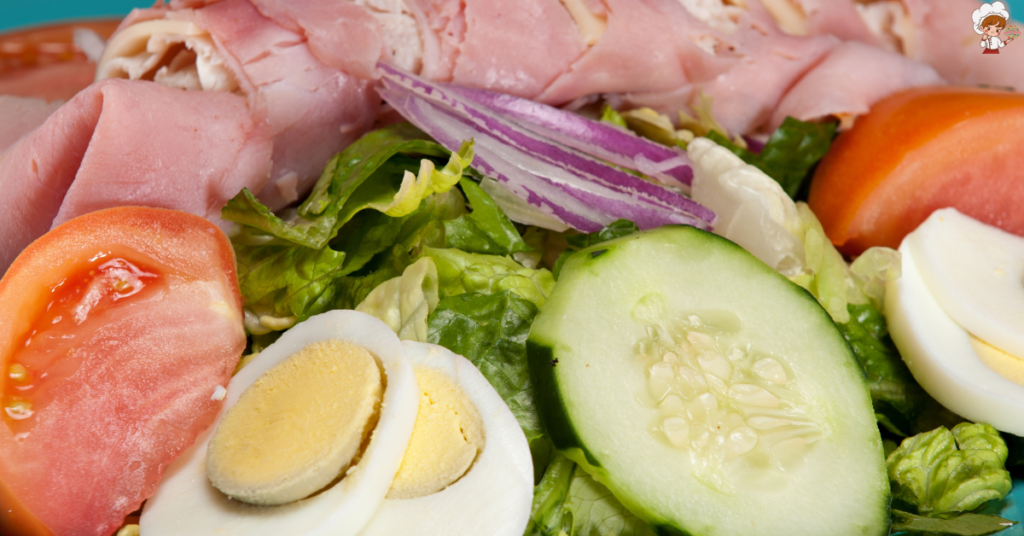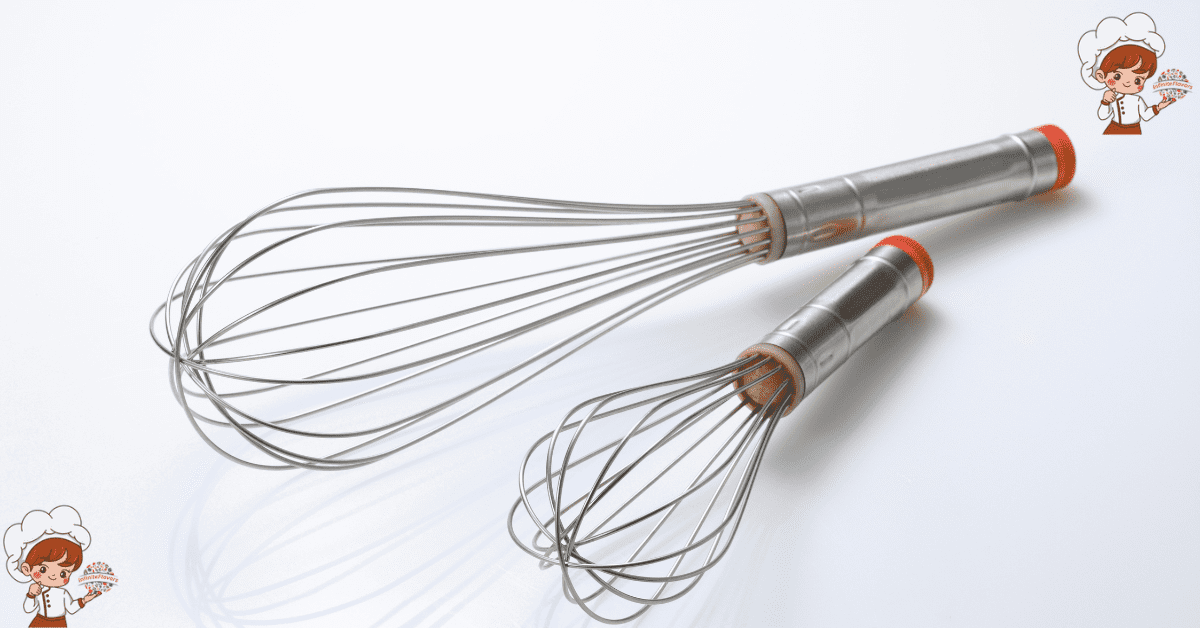Amazing History, Origin, and Popularity Of The Chef Salad

Popularity Of The Chef Salad, a staple in American cuisine, is a versatile dish known for its combination of fresh vegetables, protein-rich meats, and flavorful cheeses. Often served as a main course, it has become a favorite in restaurants, homes, and cafeterias across the United States. But where did this beloved salad originate, and how did it rise to prominence? This blog delves into the history, origin, and increasing popularity of the chef salad, tracing its roots from early culinary traditions to its status as a modern-day classic.
Popularity Of The Chef Salad;The Origins of Salad
To understand the chef salad’s origin, it’s essential to explore the broader history of salads. The word “salad” comes from the Latin word “sal,” meaning salt. In ancient times, salt was a key ingredient in dressings for leafy greens and vegetables. The Greeks and Romans were among the first to enjoy mixed greens with oil, vinegar, and herbs, laying the foundation for the salads we know today.
Salads evolved over the centuries, with different cultures adding their unique ingredients and flavors. By the Middle Ages, salads had become more elaborate, often including meat, eggs, and cheese. These early versions of the chef salad were a testament to the growing appreciation of diverse ingredients and the art of combining them into a cohesive dish.
The Birth of the Chef Salad
The chef salad, as we know it, began to take shape in the early 20th century in the United States. Its exact origin is debated, with several chefs and regions claiming credit. However, it is widely believed that the chef salad was inspired by European culinary traditions, particularly the French and British, who were known for their composed salads featuring an array of ingredients.
One popular theory is that the chef salad was first created at the Ritz-Carlton in New York City during the 1940s. The salad was initially called the “Cobb Salad,” named after Robert H. Cobb, the owner of the Hollywood Brown Derby restaurant. According to legend, Cobb created the salad late one night from leftover ingredients in the kitchen, including lettuce, bacon, chicken, hard-boiled eggs, avocado, cheese, and tomatoes. While the Cobb Salad is distinct from the chef salad, the two share similarities in composition and may have influenced each other’s development.
Another theory attributes the creation of the chef salad to Louis Diat, a French chef who worked at the Ritz-Carlton in New York. Diat is said to have popularized the salad during the 1940s, presenting it as a hearty, meal-worthy dish that could be customized with various ingredients. His version of the chef salad typically included lettuce, ham, turkey, Swiss cheese, and hard-boiled eggs, all arranged artfully on a plate and served with a dressing of choice.
The Chef Salad in the 20th Century
As the chef salad gained popularity in the mid-20th century, it became a symbol of American dining culture. The salad’s appeal lay in its versatility and the ability to cater to different tastes and dietary preferences. It could be made with a variety of greens, from iceberg lettuce to romaine, and the proteins could range from ham and turkey to roast beef and chicken. The inclusion of cheese, eggs, and vegetables added to its nutritional value, making it a well-rounded meal option.
During the 1950s and 1960s, the chef salad became a staple in diners, cafeterias, and hotels across the country. It was often featured as a menu item in restaurants, where diners could enjoy a fresh and satisfying meal without the heaviness of a traditional entrée. The salad’s presentation, with its ingredients arranged in neat sections or rows, added to its appeal, making it a visually pleasing dish.
The rise of convenience foods in the 1960s and 1970s also contributed to the popularity of the chef salad. Pre-packaged salad ingredients, such as sliced meats and shredded cheese, made it easier for home cooks to prepare the salad quickly. The availability of bottled salad dressings further simplified the process, allowing people to enjoy a chef salad without the need for extensive preparation.
The Chef Salad and American Dietary Trends
The chef salad’s popularity has also been influenced by changing dietary trends in the United States. As health-conscious eating became more prevalent in the late 20th and early 21st centuries, salads were increasingly seen as a healthy alternative to heavier meals. The chef salad, with its combination of protein, fiber, and essential nutrients, fit well into the emerging trend of balanced, nutrient-dense meals.
The salad’s adaptability to different diets also played a role in its enduring popularity. Whether someone was following a low-carb, high-protein, or vegetarian diet, the chef salad could be easily modified to meet their needs. For example, a low-carb version might omit croutons and opt for a vinaigrette dressing, while a vegetarian version could replace the meats with tofu or additional vegetables.
As awareness of portion control and calorie counting grew, the chef salad was often marketed as a lighter meal option that still provided satiety. Restaurants began offering chef salads in various portion sizes, catering to customers who wanted a full meal or a smaller side salad. This flexibility helped the chef salad maintain its place on menus across the country.
The Modern Chef Salad: Variations and Innovations
In recent years, the chef salad has continued to evolve, with chefs and home cooks alike experimenting with new ingredients and presentations. The basic formula of greens, protein, cheese, and eggs remains consistent, but the possibilities for customization are endless.
One popular variation is the Southwestern chef salad, which incorporates ingredients like grilled chicken, black beans, corn, avocado, and a spicy ranch dressing. This version adds a zesty twist to the traditional chef salad, reflecting the influence of Tex-Mex cuisine on American food culture.
Another innovation is the use of gourmet ingredients in chef salads, elevating the dish to new culinary heights. For example, some restaurants offer chef salads made with artisanal cheeses, organic greens, and house-made dressings. The inclusion of premium proteins, such as smoked salmon or grilled shrimp, adds a touch of luxury to the salad.
The rise of global flavors has also impacted the chef salad, with international ingredients finding their way into the mix. A Mediterranean-inspired chef salad might feature feta cheese, olives, roasted red peppers, and a lemon-oregano dressing, while an Asian-inspired version could include grilled chicken, sesame seeds, mandarin oranges, and a ginger-soy dressing.
The growing popularity of plant-based diets has led to the creation of vegan chef salads, where traditional animal-based ingredients are replaced with plant-based alternatives. Tofu, tempeh, and seitan are commonly used as protein sources, while nutritional yeast can be substituted for cheese. These salads cater to the increasing demand for vegan options and highlight the chef salad’s adaptability to different dietary preferences.
The Chef Salad in Pop Culture and Media
The chef salad has also made its mark in pop culture, appearing in television shows, movies, and cookbooks. Its presence in popular media has helped solidify its status as a quintessential American dish. In the 1970s, the chef salad was often featured in sitcoms and dramas, where characters would order it in diners or prepare it at home, reinforcing its image as a convenient and wholesome meal.
Cookbooks from the mid-20th century frequently included recipes for chef salads, with variations and tips for creating the perfect salad. These cookbooks, often aimed at busy homemakers, emphasized the salad’s simplicity and versatility, making it a popular choice for both everyday meals and special occasions.
The chef salad’s appeal has also been highlighted in health and wellness media, where it is often recommended as a balanced meal option for those looking to maintain a healthy diet. Nutritionists and dietitians have praised the chef salad for its combination of lean proteins, healthy fats, and fiber-rich vegetables, making it a go-to choice for those seeking a nutritious and satisfying meal.
The Chef Salad’s Role in American Cuisine
Today, the chef salad remains a beloved dish in American cuisine, celebrated for its versatility, nutritional value, and ability to adapt to changing tastes and dietary trends. Its continued popularity is a testament to the enduring appeal of salads as a meal option, particularly in a culture that values convenience, health, and flavor.
The chef salad’s role in American cuisine is multifaceted. It serves as a bridge between traditional and modern culinary practices, combining classic ingredients with contemporary twists. It is also a reflection of the diverse influences that have shaped American food culture, from European traditions to the incorporation of global flavors.
As the chef salad continues to evolve, it will likely remain a staple in both home kitchens and restaurants. Its ability to adapt to new trends and preferences ensures that it will continue to be a popular choice for diners seeking a fresh, satisfying, and customizable meal.

Classic Chef Salad Recipe
Ingredients
- Ingredients:
- Salad Base:
- 6 cups mixed greens e.g., romaine lettuce, iceberg lettuce, spinach
- Protein:
- 4 oz cooked turkey breast sliced
- 4 oz cooked ham sliced
- 4 oz cooked chicken breast sliced
- Vegetables:
- 1 large tomato diced
- 1 cucumber sliced
- 1/2 red onion thinly sliced
- 1 avocado sliced
- Cheese:
- 4 oz Swiss cheese cubed or sliced
- 4 oz cheddar cheese cubed or sliced
- Eggs:
- 2 hard-boiled eggs quartered
- Toppings:
- 4 strips cooked bacon crumbled
- 1/4 cup croutons optional
- Dressing:
- 1/2 cup ranch dressing or dressing of your choice
Instructions
- Instructions:
- Prepare the Salad Base:
- Start by washing and drying the mixed greens. Chop them into bite-sized pieces if necessary.
- Arrange the greens evenly across a large serving platter or in individual bowls.
- Add the Protein:
- Layer the sliced turkey, ham, and chicken breast on top of the greens, arranging them in separate sections for a classic presentation.
- Incorporate the Vegetables:
- Evenly distribute the diced tomato, cucumber slices, and red onion over the salad.
- Add the avocado slices for a creamy texture.
- Add the Cheese:
- Place the Swiss cheese and cheddar cheese in sections over the salad, keeping them separate from the meats.
- Include the Eggs:
- Arrange the hard-boiled egg quarters around the salad or place them in a section of their own.
- Finish with Toppings:
- Sprinkle the crumbled bacon and croutons (if using) over the top of the salad.
- Dress the Salad:
- Drizzle the ranch dressing (or your preferred dressing) evenly over the salad.
- Serve additional dressing on the side for those who like extra.
- Serve and Enjoy:
- Serve the chef salad immediately, allowing everyone to mix the ingredients to their liking.
- Pair it with some crusty bread or enjoy it on its own as a hearty meal.
Conclusion
The chef salad’s journey from its humble beginnings to its status as a beloved American dish is a fascinating story of culinary evolution. From its roots in European salad traditions to its rise in popularity during the 20th century, the chef salad has become a symbol of versatility and adaptability in the world of food. Its enduring appeal lies in its ability to cater to a wide range of tastes and dietary preferences, making it a timeless favorite that continues to delight and nourish people across the United States.
As we look to the future, the chef salad is poised to remain a key player in the world of salads, constantly evolving to meet the needs and desires of those who enjoy it. Whether you prefer a classic version or a modern twist, the chef salad offers something for everyone—a true testament to its lasting legacy in American cuisine.








